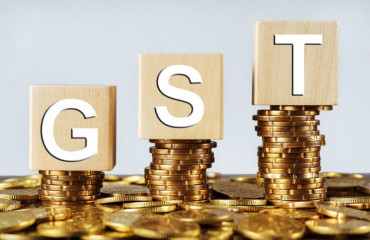
The Goods and Services Tax (GST) Council recently decided to treat multi-utility vehicles (MUVs) with a minimum length of four metres, an engine size of at least 1,500cc, or a ground clearance exceeding 170 mm as sport-utility vehicles (SUVs). These vehicles used to attract 20% GST but will now attract 22% GST. MUVs that don’t match the prescribed criteria will continue to attract 20% GST.
The Goods and Services Tax (GST) Council recently decided to treat multi-utility vehicles (MUVs) with a minimum length of four metres, an engine size of at least 1,500cc, or a ground clearance exceeding 170 mm as sport-utility vehicles (SUVs). These vehicles used to attract 20% GST but will now attract 22% GST. MUVs that don't match the prescribed criteria will continue to attract 20% GST.
Another of the council's latest decisions is that popcorn sold at cinemas will attract different rates of GST depending on whether it is bought along with movie tickets or separately. This isn't an isolated case. GST is levied at 18% on kulfi but at 5% on sandesh, though both are varieties of Indian sweets. It defies logic that kulfi is seen as a luxury while sandesh isn't.
The true extent of muddle-headedness is perhaps best demonstrated by the council's decision this week to tax online gaming the same way as horse racing and other forms of gambling by levying 28% GST on the entire turnover of gaming firms. In doing so, the council has confused games of skill with those of chance, and in the process hamstrung an upcoming industry with significant potential to create jobs.
It's safe to say the GST Council is turning out to be one of the greatest frustrations in India's quest to improve the ease of doing business and restart the private-investments cycle to help create jobs quickly for the millions of young Indians entering the labour force.
The point of moving to a GST regime was to have a simple, predictable tax. What has been the GST's record? According to one estimate, as of 6 November 2022 the Central Board of Indirect Taxes and Customs (CBIC) had published more than 900 notifications and over 1,100 circulars and orders since GST was rolled out in 2017. This means the GST law has been amended more than 900 times in five years.
Even accounting for the fact that not every notification or amendment materially affects every business, is it not a challenge to keep track of these many notifications and amendments, especially for small firms?
Although states replicate the union government's GST notifications word for word, meaning taxpayers don't have to track them separately, including them takes the total number of notifications and circulars issued in five years to more than 30,000. The GST rate notification (1/2017-CTR, dated 28-06-2017) has been amended more than 20 times since 2017.
Why has GST become the subject of endless tinkering? The answer lies in the incentives of the members of the GST Council, which is headed by the union finance minister and includes finance ministers of states as members.
Before GST was introduced, state finance ministers oversaw indirect taxes. They would stand to lose this meaty portion of their work allocation if GST were to become smooth and predictable. A simple and stable GST would mean less clout for these politicians as they wouldn't be required to make these many decisions. This would reduce or eliminate the need for corporate lobbies to seek changes and removal of anomalies. Tax bureaucrats and administrators would also lose their power over taxpayers. Bureaucracies and tax lawyers benefit when tax systems are complex. Their incentives are not aligned with those of investors.
Economists who understand this political economy of tax systems have, therefore, argued that the best GST for India would be a single-rate, no-exemptions tax, rejecting the political argument that some items, such as luxury products, must be taxed at higher rates.
The council, though, with help from the tax bureaucracy, is ever-ready to tinker with the GST system. For five years it has been saying that it's rationalising the GST slab structure, but seems in no hurry to complete the task.
Ideally, shifting to GST should have reduced the role of lobbies and decision-makers. The GST Council hasn't reduced its interventions because nobody likes to give up economic control, but reforms aren't possible without this.
